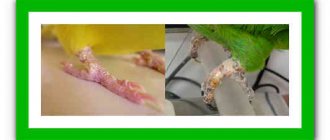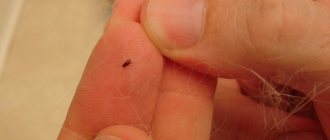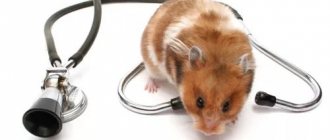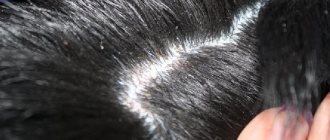Owners of small pets doubt whether hamsters have fleas. Despite their short hair and small size, rodents are warm-blooded animals. The composition of their blood is nutritious food for parasites, so blood-sucking pests can live on hamsters. During the treatment of your pet, it is necessary to disinfect the cage, bowls and equipment. To eliminate pests, anti-flea drops, aerosols, and injectable preparations are used.
Fleas can live on hamsters since they are warm-blooded rodents.
What is the danger
If you imagine that a flea got into the house from the street, then unpleasant facts emerge.
She managed to bite several stray animals and people, and then “moved” to a new place of residence. It is difficult to predict what diseases a hamster may get after being bitten by a pest. The flea is a carrier of plague. The virus has not been destroyed and is still walking around the world. But the chance of a hamster contracting plague or typhoid is extremely small. However, there is another set of diseases that will become dangerous for the pet’s body.
Worms
The hamster tries to get rid of the bloodsucker by biting it out of its fur. Dandruff and flea excrement enter the esophagus, and the animal becomes infected with helminths. The consequences of their parasitism are known to every person.
Infection
The animal injures itself. Claw wounds can become infected and fester. Neglected skin problems result in abscesses for the hamster. Inflammations become an attractive target for the proliferation of dangerous bacteria and viruses.
Stress
The animal cannot sleep and eat peacefully because of fleas. They constantly bite him, and the hamster throws all his energy into trying to destroy them. The pet weakens, loses weight, becomes nervous and aggressive. A neglected stress condition will lead to the death of the pet
Therefore, it is important to remove fleas as quickly as possible and treat the premises
Do not use medications for cats and dogs
What not to do
Do not get your hamster's fur wet. The animal will try to dry itself and dangerous particles from its coat will fall into the esophagus. The result is the development of helminths.
Do not use drops on the withers or anti-flea shampoos for cats and dogs. The products are dangerous for the small body and skin. There is no drop on the withers for rodents.
Do not buy medications yourself after reading reviews or descriptions on the Internet. Products are recommended only by a veterinarian.
Is it possible to remove fleas from hamsters?
You can get rid of the population of insects on your fluffy fur using specialized insecticidal products, which are available in a wide range in pet stores. There are also preparations created specifically for the body of hamsters - the concentration of harmful substances in them is minimal.
The most common drugs:
- spray against insects (including fleas) - just spray it on the rodent’s fur. It is necessary to avoid contact of the product with the oral or mucous membrane;
- insecticidal powder - apply a thin layer on the animal’s body;
- drip preparations - characterized by targeted application and local effect. Experts recommend applying up to 5 drops to each animal, based on its physical size.
Since it is forbidden to wet rodents, the use of shampoos should be avoided initially. Recently, there has been food on sale that contains anti-flea mixtures, but not all pets decide to eat them.
Eggs and larvae of insects are not able to live on the body of their hosts. Their favorite habitats are the fur of burrowing rodents. The “young generation” of parasites is shed from the fur and settles in the warm litter. Then the larvae appear, feeding on the sweat and remains of older insects. Fleas in hamsters become full-fledged adults after 1 molt.
We strongly recommend replacing the old litter. It is better to wash the cage with boiling water and laundry soap or detergent. After this, you can use the following drugs:
- 8in1;
- BioVax;
- Frontline;
- Stronghold;
- Ivermectin.
Whatever treatment option you choose, the course must be repeated after 1 week, this will eliminate the likelihood of re-infection with bloodsuckers. The cage should be washed with a bromocyclene solution, and the animal should be allowed back only after 2 weeks.
Cell processing
Insect larvae are not able to attach to the fur of rodents. Parasites lay eggs near the animal’s habitat, so it is necessary to keep the cage clean.
Fleas, their larvae and eggs do not survive in high temperatures. Disinfection with water vapor (+60…+110°C) will get rid of contaminants. The use of steam irons and floor cleaning devices is allowed.
Processing is carried out:
- over the entire surface of the cell from the inside and outside;
- disinfect accessories;
- sleeping house;
- toys;
- bowls, drinking bowls.
Additionally, wet cleaning is carried out using alkaline solutions. To do this, treat the cage with soda and use it to wipe the bars and bottom with a wet rag. The remaining substance is washed off with hot water.
All equipment that was in the animal’s house is treated with soda. It can be boiled for 2-5 minutes in hot water and washed with soapy water.
A 10% bleach solution can be used for disinfection. But, unlike baking soda and steam treatment, the chemical compound can cause poisoning in a rodent.
The animal cell must be treated with a soda solution.
Treatment
The veterinarian rules out other skin problems and makes a diagnosis of flea dermatitis. A specialist will tell you what to do if your hamster has fleas. However, it is not always possible to show an itching rodent to a ratologist.
To remove fleas, you need to understand the insect's life cycle. They do not live on the hamster, but only feed. 90% of the entire population is in the external environment. Adults, eggs, and larvae develop in bedding or upholstered furniture, in carpets, behind baseboards. Therefore, it is necessary to remove parasites from a hamster as a last resort. First - the apartment and the rest of the pets.
Treatment of the premises and all animals in the house (cats, dogs)
The apartment needs to be thoroughly vacuumed, then shake out the vacuum cleaner (or throw away the disposable bag). Repeat this cleaning daily, or at least 2 times a week.
Particular attention is paid to upholstered furniture on which a cat or dog sleeps, carpets, and dusty corners. Then do wet cleaning
To ensure that you get rid of eggs and larvae, insecticides are used - carpet powders or sprays (Raptor, Kombat, Raid). The spray is effective in hard-to-reach places (behind the baseboard, in floor crevices). An inexpensive option is the concentrated drug Neostomazan. One 5 ml ampoule is diluted in 3 liters of water and the room is treated with a spray bottle
Then they do wet cleaning. To ensure that you get rid of eggs and larvae, insecticides are used - carpet powders or sprays (Raptor, Kombat, Raid). The spray is effective in hard-to-reach places (behind the baseboard, in floor crevices). An inexpensive option is the concentrated drug Neostomazan. One 5 ml ampoule is diluted in 3 liters of water and the room is treated with a spray bottle.
Hamster handling
If there are no dogs in the house, but the hamster has fleas, the baby cannot avoid disinfestation. Otherwise, after the first two measures, the parasites in the rodent may disappear on their own. Flea treatment for hamsters is difficult to find on sale.
Consultants usually suggest medications designed for dogs and cats, but the size of the animals is not comparable. If Djungarian hamsters have fleas, we are talking about a rodent weighing no more than 50 grams. Your veterinarian will tell you how to get rid of fleas from your hamster without harming him. What medications can a ratologist prescribe:
Injections
Ivermectin 1% subcutaneously 0.03 ml per 1 kg of weight 2 with an interval of 10 days. The drug is used in hamsters for other entomosis, but for flea infestation there is no point in using a toxic drug. First try external treatments.
In the form of a spray
If it is difficult to spray the spray evenly, you can sprinkle it on a cotton pad and wipe your pet with it, lifting the fur:
- “Bars” - fipronil 0.3%, dosage 0.25 ml per animal (1 click on the dispenser);
- “BioVax”, “Le Artist” – plant components.
Insecticidal powder (“Insectal”, “Clandestine”)
Dust the fur and rub the powder (0.5 g) into the skin against hair growth. In case of severe damage, repeat after 10-14 days.
Cell disinfection
It is necessary to completely change the litter. You can use bedding made from shavings of coniferous trees (cedar) - this will repel insects.
The cage and accessories are washed with hot water and soap once a week.
The main thing for the owner is not to confuse
Some skin diseases have symptoms similar to parasitic bites. Fleas themselves can be easily confused with such an unpleasant phenomenon as a tick.
Each of these problems has its own treatment methods, you need to make sure what exactly your hamster is facing, and then act. If you have any suspicions that your pet has pests and you need to choose a treatment, then the best way is to consult a specialist.
The veterinarian will be able to determine which parasite is interfering with the well-being of the hamster. Fleas that parasitize hamsters are not particularly different from those that torment cats or dogs. Ectoparasites have three pairs of legs and feed on the blood of animals, in this case hamsters.
Effective means
First of all, it is very important to understand that it is strictly forbidden to poison fleas on a hamster with means for removing fleas from dogs and cats. It is also forbidden to wet the hamster during treatment.
The most popular are special preparations for treating rodents. This can be Ivermectin, Le-Artist, Frontline, Stronghold and others, which are used externally or by injection. The drugs BioVax, Botfo, 8in1 are also considered very popular.
Special insect repellents for hamsters: quality guaranteed
Insecticides for hamsters
In deciding what to do if a hamster has fleas, an integrated approach is needed. It should include:
- Treatment of other pets.
- Cleaning the hamster cage.
- It is also necessary to get rid of fleas in the apartment. For this purpose, insecticidal preparations and folk remedies are used.
The most popular insecticides for hamsters are:
- Frontline. The product is available in the form of drops and sprays. They belong to the latest generation of insecticides and have a high degree of safety. The average price for drops is 420-480 rubles. The main active ingredient is fipronil. It has a pronounced insecticidal and acaricidal effect and has a cumulative effect. The result lasts for a month.
- Stronghold. 3 pipettes cost about 1000 rubles. The active ingredient is selamectin. The drug has a wide spectrum of action. If the dosage is observed, it has no side effects and is easily tolerated even by small rodents.
- Biovax. A domestic drug that is highly effective and low in price, ranging from 50-70 rubles. Destroys parasites within 24 hours after application.
- Advantage is a German drug.
Thus, the appearance of fleas in a hamster is quite common. But since it is not the most profitable host for fleas, they will not exist on it for long. The disposal procedure involves treatment with insecticidal preparations. To avoid the reappearance of bloodsuckers, you must adhere to simple rules of prevention and monitor hygiene.
If you use drops to remove parasites, apply them pointwise throughout the body. The amount of the drug depends on the size and weight of the animal. The powder should be applied evenly to the skin, avoiding contact with the nose and mouth. A spray will help get rid of parasites. If the hamster is small, it is better to wipe it with a cotton swab soaked in a solution.
To remove parasites in a short time, it is necessary to disinfect the cell. Replace the usual filler with wood, preferably coniferous. Wash the cage with hot water and laundry soap.
Now you know what to do if your hamster has fleas.
How to treat
What to do if your pet has parasites and how to remove fleas from hamsters? Fleas in Djungarian hamsters, like in the Syrian rodent, should be treated by eliminating the original source. Treat all animals at once:
- treat all infected pets with insecticides;
- treat all items used by the hamster and other pets;
- treat the entire living space with specialized protective preparations against unwanted and unwanted insects.
When carrying out processing, it should be taken into account that special preparations should be selected for each animal. Injections or powder, drops or spray are perfect for your hamster.
It should be borne in mind that the injections are carried out in a veterinary clinic, and the rest of the drugs can be treated with the rodent at home yourself.
The drops are applied pointwise over the entire body of the hamster. The amount of the drug is determined depending on the size of the animal.
The powder should be applied in an even, thin layer over the entire body of the rodent (do not allow it to get into the animal’s nose and mouth).
Gently spray the spray over the entire fur of the fluffy. If you are afraid that droplets may get into the animal’s nose or mouth, you can wet a cotton swab with spray and carefully wipe the hamster’s body.
It is strictly forbidden to wet the rodent during processing, so commonly used products for furry animals are:
- Ivermectin;
- Le-Artist;
- Stronghold;
- Frontline;
Suitable for self-processing: BioVax or Botfo.
As you can see, the choice of drugs that relieve rodents from skin wickedness is quite large. All of these anti-flea bactericides can be purchased at specialized zoological stores or at a veterinary clinic. When choosing any treatment, remember that treatment should be repeated after 8 days from the first treatment. To make sure that the parasites have left the animal, take your pet to the veterinarian.
Remember! It is best to contact a specialist and consult with him before using any of the above remedies.
How to remove helminths
Fleas in hamsters are dangerous for the appearance of helminths; they can be removed from the body with appropriate means with a wide spectrum of action against helminths, for example:
- Dirofen suspension for rodents with pumpkin oil;
- Dirofen paste for rodents 20 and 60 with pumpkin oil;
- Anthelmintic suspension for rodents "Shustrik" made in Russia with Fenbendazole and Praziquantel.
What fleas can a hamster have?
Question marks
Not often, but they can. If you are wondering why a hamster you recently purchased from a pet store as a favorite toy for children is itching, you should not rule out the presence of fleas. However, itchy skin can also be a sign of stress, which is inevitable when moving from the established life of a pet store or nursery to your home.
The fact that a hamster is itching does not mean that it is flea-infested. The reason may be the lack of sufficient space in the cage or the constant presence of small children who perceive this furry living creature as a toy. In this case, the baby will stop itching if you move him into a spacious cage, put a cozy house for the hamster there and explain to the children that he also has the right to a quiet life and sleep during the daytime.
However, if you don't know what to do if your hamster is itching, try to detect fleas, ticks or lice eaters on it yourself, or simply take it to the veterinarian.
Checking your hamster for fleas
The presence of fleas can be recognized by the following signs:
- If you blow the fur on your hamster's belly, you may find black dots moving or jumping around quickly.
- In the absence of other animals, people may develop red, itchy spots on their bodies.
- If a flea has been living on a hamster for a long time, fine brown sand can be found on the skin - its excrement.
Lice beetles (relatives of human lice) have a lighter body and move slowly. In addition, a characteristic hairless spot on the skin forms around them. Allergic reactions and stress often manifest as small, itchy rashes in rubbing areas (armpits, groin) and on the abdomen.
There are many types:
- rabbit;
- canine;
- feline;
- bird;
- rat.
Hamsters have different fleas. The most common is the cat flea. They are the ones that often fall on hamsters. Often the cat becomes the carrier.
The hamster is too small to be a permanent home for fleas. They are transit passengers.
By the way, only adult bloodsuckers feed on blood.
Getting rid of fleas from a hamster
Let's look at the entire treatment process. It is forbidden to use medications that are suitable for cats and dogs; hamsters need special medications, for example, butox is very effective and safe. When you start processing an animal, try to protect it from water; it is strictly forbidden to get it wet, as this will ruin the result.
The products must be purchased at a veterinary clinic - you can do it in our veterinary clinic, or in trusted pet stores; be sure to check the expiration date of the drug. At the moment, injection medications for fleas have become the most popular; they are more effective.
Among them, Frontline, Stronghold, Le-Artist, and Ivermectin are often used. It is necessary to treat not only the skin of the animal, but also the cage and house.
It is necessary to check the entire apartment, fleas have a characteristic property of creating colonies in the corners of the room, this must be eliminated, otherwise the problem will not be eliminated. How to notice the appearance of parasites? There are certain symptoms that you need to know about so as not to trigger the situation.
The difficulty is that hamsters constantly scratch and wash themselves, so it is not easy to notice that fleas are bothering him. If the hamster scratches much more strongly and longer than usual, then this is one of the signs of infection. You can conduct an independent inspection, because the dimensions are small and it’s easy to find pests.
There may be other symptoms that are more obvious; they occur in cases where the first signs were missed. There are inflamed areas and noticeable lesions on the hamster's skin. The animal's behavior is restless, chaotic movements, fuss, active scratching.
A symptom may be emerging dandruff; fleas provoke rapid desquamation of the epithelium. Some parts may become bald and the hair becomes sparse - this is caused by the combing of parasites.
Causes of pet infection
There are several main reasons for the appearance of parasites in rodents. Very often, infection occurs before the pet has moved into its new home. In pet stores, if the care is unsatisfactory, the animal can become infected from other neighbors living in display cages
It is very important to pay due attention and treat your pet in the first days of life in a new place. However, sometimes the appearance of fleas occurs even with ideal care for the hamster
Find out whether hamsters have rabies and how the signs of the disease appear.
Other pets
Hamsters are very clean animals and, under proper conditions, parasitic insects cannot appear on their own. Most often, fleas come into the home with other pets that require daily walks outside. Most often, bloodsuckers enter the house in a soft cat's fur coat, but such parasites do not live long on a small hamster. The most difficult thing will be to remove rat or mouse fleas, which can also be “brought” into the home after a walk by a cat or dog.
Shoes
Surprisingly, your shoes can also cause parasites in your animal.
There are several main factors that contribute to the appearance of “uninvited guests” on a pet’s fluffy fur:
- rare wet cleaning of the house;
- walking around the apartment in “street” shoes;
- presence of wooden flooring with cracks and crevices.
In such conditions, fleas, whose eggs you may have brought on your soles, will develop and multiply very rapidly.
Grass
There is a high probability of introducing parasites into the hamster’s cage along with the juicy greens that pets love so much. In order to avoid infection through plant foods that may contain flea larvae, be sure to wash the plucked grass under running warm water.
Did you know? In one night, having fun on a training wheel, a hamster is able to run a distance of 10 km.
Fleas on hamsters
Hamster and mouse mammals living in the wild are often parasitized by fleas from the family Leptopsyllidae.
However, fleas are extremely rare in small rodents kept as pets. Often, a hamster becomes infected with these parasites from other pets - cats or dogs.
Symptoms of fleas in hamsters:
- various skin rashes;
- itching;
- extensive alopecia (baldness);
- dandruff;
- the appearance of crusts on the skin.
This is what alopecia looks like in a hamster:
Surprisingly, fleas themselves do not cause much concern for hamsters. However, they are carriers of a variety of dangerous infections. In particular, myxomatosis, which is safe for humans and hamsters, but can cause death in domestic rabbits.
Anti-flea medications that are successfully used for cats and dogs can be deadly for hamsters and other small rodents. To treat hamsters against ectoparasites, it is necessary to use products that are harmless to the rodent. Anti-parasitic spray for rodents Le Artis
";
universal powder “Clandestine”,
which is suitable for cats, dogs, rodents and birds;
product in drops Canina PETVITAL Verminex
.
Depending on the type of insecticide you have chosen, we use one or another treatment method.
Spray.
Gently spray the entire surface of the hamster's body, being careful not to get it into the mouth and nose. It’s even more convenient to moisten a cotton swab with the spray and wipe the rodent’s body with it.
Powder.
Again, dust the entire surface of the body with a thin layer, excluding the mouth and nose.
Drops.
Apply drops to the skin at different points of the body, from 2-3 to 5 drops (depending on the type and size of the rodent).
- Once a week, be sure to clean the cage by completely changing the filler and washing the tray with hot water and detergents.
- When purchasing a new hamster, before placing it with the previous cage occupants, quarantine it for a week in a separate quarantine cage.
- Promptly carry out preventive flea treatment for other pets - cats, dogs, ferrets, etc.
- Periodically treat the apartment with insecticidal agents.
- Prevent the possibility of wild rodents (rats, mice) appearing in close proximity to domestic ones.
How to get rid of fleas on a hamster's fur
At the moment, not every owner of a small rodent knows what to do if the hamster has various types of fleas. In this case, the pet owner does not need to panic, but should immediately contact the veterinarian who treats the animals.
It is the doctor who prescribes specific anti-flea medications. Then the pet owner buys ready-made insecticidal preparations.
Modern manufacturers produce a variety of insecticidal products. This allows the buyer to choose those drugs that are most convenient to use.
Treating all pets and your home for fleas
When fleas appear in an apartment, the tenant treats both all pets and the apartment itself.
When sanitizing a room in which fleas live on hamsters, the tenant performs the following actions:
- thoroughly vacuums his home, and then shakes out the vacuum cleaner (or throws out the disposable dust bag). A household member carries out such cleaning every day or at least 2 times in 7 days;
- vacuums a sofa or other furniture on which a cat or dog is sleeping, as well as carpets and dusty corners;
- After using the vacuum cleaner, he does a wet, thorough cleaning of his home.
When sanitizing his private household or apartment, a household member uses various insecticidal powders for indoor carpets or sprays (Raid, Combat, Raptor).
Then the pet owner dilutes 1 ampoule of this product (5 ml) with 3 liters of water and treats their home using a spray bottle.
When carrying out hamster sanitation, you need to keep in mind the following nuances:
- anti-flea sprays are effective for 2 weeks - 5 months;
- insecticidal drops are valid for a maximum of 1 month. They are designed for the specific weight of the pet. The household member squeezes the contents of the tube onto the skin of the cat or dog’s withers;
- Special flea shampoos have a short shelf life. Therefore, they are used only if fleas have already appeared on a cat or dog.
After the first treatment with insecticidal shampoo, the pet owner puts an anti-flea collar on the pet.
Hamster handling
Even if there are no cats or dogs in the house, hamsters still have fleas. In the event of a flea infestation, the rodent cannot avoid undergoing unpleasant disinsection. However, today there are practically no highly effective anti-flea products for such animals on sale.
Sellers of veterinary pharmacies often offer their clients those drugs that are made for dogs and cats, but their size is much larger than such rodents. After all, a hamster weighs approximately 50 grams.
This doctor prescribes the following highly effective anti-flea drugs for the hamster:
- aerosols;
- drops;
- powders.
Aerosol
When treating a hamster infected with fleas, its owner uses the following aerosols:
- "Bars" - fipronil 0.3%. To get rid of hamster fleas forever, the resident sprays 0.25 ml of this product on the rodent (presses the dispenser once);
- "BioVax";
- “Le Artist” is made from various plant components.
In such a situation, the resident sprays this product evenly over the hamster. Also, the owner of the animal sprinkles it on a cotton pad, and then wipes it over his pet, lifting its fur.
Drops
The drops are also a highly effective flea treatment for hamsters. When using this drug, the owner of the hamster drips 2-5 drops onto his withers and along the hamster's spine.
When treating a hamster for fleas, its owner uses the following drops:
- Celandine;
- Stronghold;
- Frontline;
- Petvital Canina Verminex.
Such insecticides not only instantly kill fleas, but also prevent re-infection of the hamster.
Powder
Not every rodent owner knows how to properly remove fleas from a hamster. This can be done using an insecticidal special powder such as anti-flea powder.
When this product is used correctly, the household powders and cleans the hamster’s fur, and then the small pests quickly die. Moreover, this powder is made of soft small particles that do not damage the hamster’s skin.
When treating a sick hamster, a household member uses the following powders:
- Savic Blue Cloud Dust (Savik);
- Insectal.
The powder is distributed in a thin layer over the entire body of the hamster (pollination occurs). The main thing is not to get into the hamster's mouth and nose.
Cage disinfestation
In addition to carrying out anti-flea treatment on the hamster itself at home, you also need to change its bedding - from old to new. Moreover, you can, for example, use a bedding made of cedar shavings, which repel fleas.
The cage and hamster accessories are thoroughly washed with hot running water and soap once every 7 days.
IS IT POSSIBLE TO BATH HAMSTERS? DO HAMSTERS HAVE FLEAS?
How to remove fleas from a hamster
The breeding process must begin with putting the cage in order and completely replacing the filler. After all, it is in it that insects lay their eggs. They are so small that it is impossible to notice them.
Some of the eggs are on the cage itself and objects that are inside it. After the cage and all equipment are well washed, they need to be treated with any insecticide. Convenient to use aerosols. Treated items are rinsed so that any remaining poison does not harm the animal. Sometimes repetition of manipulations is required.
The animal itself should be treated only on the recommendation of a veterinarian. This is due to the fact that the calculation of the amount of contact insecticide depends on the weight of the pet. Most often prescribed:
- BioVax;
- Stronghold;
- Frontline.
All pets will need to be treated for fleas at the same time as rodents. The living space is being thoroughly cleaned
Attention is paid to the floor and floor coverings. Carpets are taken out to dry on a sunny day and beaten well
They can be taken to a special laundry. After cleaning the room, insecticide is sprayed or scattered in it. While animals are being processed, people are removed from the premises.
Do hamsters have fleas?
Do you doubt whether your hamster can have fleas? Examine your pet carefully. Even if fleas are not visible among the fur, their presence is indicated by bites - red dots around which there is inflammation, scratching or scabs. The parasites themselves can hide in the shelter of a furry rodent: a house or bedding.
There are no hamster fleas as such, but animals can become infected from other pets. It is worth noting that fleas are not very common in hamsters, especially in those that were already born in a cage. Predisposition to parasites also depends on the breed of rodent. For example, Djungarian hamsters, as well as Syrian ones, rarely have fleas.
Where do hamsters get fleas?
If the hamster just “moved” into the house from a pet store, the parasites could move with it. The buyer does not know for certain how clean the environment was created for the rodent before, and what animals he lived with. Even parrots, when living next to hamsters, can be sources of parasites. And what can we say about those animals whose bodies are covered with thick hair?
But if dungarian hamsters or other breeds that have been kept at home since birth have fleas, most likely the cause of the infection is in cats or dogs, if they are also among indoor pets and have free access to the street. Parasitic insects simply jump onto small rodents, settle in their litter or house, and are even able to reproduce, increasing their numbers.
Also, fleas often bother residents of the first floors of houses with damp basements: the parasites simply rise from below. They need to eat. Fleas don’t really know who they want to bite, the main thing is that the new owner is warm-blooded, and even better, fluffy, because it’s very easy to hide in thick fur.
What is the danger of fleas for hamsters
A hamster's fleas themselves are not as dangerous as the consequences of their bites.
After being bitten by this parasite, you may experience:
- severe itching;
- skin redness;
- irritation.
By scratching the bite, the hamster can introduce an infection into it. But even during the bite of a pet, a potential danger awaits: fleas are carriers of diseases!
Infectious diseases, including fatal ones, as well as helminths, rabies - all this can be picked up by a hamster from a tiny flea that accidentally jumped on it.
Symptoms of fleas in a hamster
Only a veterinarian can accurately determine whether hamsters have fleas, since in everyday life other conditions can be mistaken for symptoms of infection by blood-sucking insects:
- skin diseases;
- allergic reactions (to food, bedding components, vitamin supplements, etc.);
- stress.
How to detect the presence of parasites
Very often, hamster owners notice the appearance of blood-sucking parasites only when the pet’s life becomes completely unbearable. The reason for this is the animal’s excessive activity. Rodents themselves are very clean, and pay enough attention to hygiene, constantly licking and combing their fur coat. Therefore, regular examinations of your pet should be carried out, which will help identify parasites as early as possible. There are several main signs that unmistakably indicate a problem.
Active behavior
When parasites appear, the pet’s usual calm existence is replaced by sleepless nights and inappropriate behavior.
The skin reaction to bites is various forms of itching, which provoke the following characteristic actions:
- restless movement around the cage during the day and night;
- scratching the skin in certain places;
- attempts to bite parasites out of wool.
Skin problems
Very often, the appearance of parasites can go unnoticed for a long time. Frequent scratching leads to inflammation of the skin.
Clear signs of the appearance of fleas and a signal to take urgent action may include:
- bald patches on certain areas of the body;
- the appearance of dandruff, which was not previously observed;
- growths and crusts on the surface of the skin.
Detection of parasites or their feces
In order to detect “uninvited guests”, you should examine the fluffy very carefully. The most favorite places for fleas on a rodent's body are the stomach and the area behind the ears. As soon as you part the fur, you will see insects. If there are fleas on the animal's skin, you can find small red spots that cause irritation and scabies.
Did you know? If a person of average build and height had the same jumping ability as a flea, he could make a high jump of 140 m and 270 m in length.
If the rodent is a carrier of a small number of parasites and the fleas themselves are not visible, then the presence of small black lumps on the hamster’s fur can be considered a sign of their vital activity. This dark “sand” on the animal’s skin is the feces of blood-sucking parasites. Insect nests can also be observed.
What can be dangerous for a hamster?
Hamster fleas are dangerous not only for the animal, but also for humans.
Often fleas bite without hurting and leave virtually no marks, but they can easily introduce an infection into the bite and cause itching, pain, inflammation, an allergic reaction, and even cause serious diseases such as plague or typhoid. Do you think that this is the Middle Ages and fairy tales of that time? But in vain!
In addition, they multiply at an incredible speed, and if you do not remove the insects in a timely manner, you can soon receive a very unpleasant gift - fleas in almost every corner of your home: in carpets, sofas, under furniture, on the animals themselves and even in your own hair.
If you notice fleas on your hamster, try to get them out as soon as possible
Fleas on hamsters
The main danger of fleas in a hamster is diseases that rodents carry. The parasite can be a carrier of pathogens such as:
- typhus;
- plague;
- hepatitis B and C;
- tularemia;
- toxocariasis;
- tularemia.
Blood-sucking parasites, at a minimum, cause constant discomfort to the pet, because their bites cause itching and irritation, but this is not the worst thing; sometimes fleas can cause:
- Infection with deadly diseases such as typhoid or plague.
- Nervous disorders of the pet. Due to constant stress, a hamster can become aggressive.
Important.
Fleas are just as dangerous to people. If you don't get rid of the parasites, their population will quickly increase and they will take up residence in carpets, bedspreads and furniture. Due to lack of nutrition, fleas will attack people and cause them a lot of trouble.
Insects can “eat” the animal slowly, causing it pain and suffering, or leave it on their own after a few days. An insect bite is painless for humans. But the health risks are enormous.
- behaves restlessly;
- It itches a lot, which often leads to partial baldness;
- scratches the skin to wounds;
- may become infected with infectious diseases.
Often, ulcerative formations formed from scratching the skin become purulently infected. The animal may develop a fever, feel unwell, etc. Sometimes, the spread of infection can even cost the rodent its life.
Fleas are dangerous to humans
Fleas that appear on a hamster are no less dangerous for humans. These small insects are difficult to notice, even if they are on his body. With a bite, the insect's saliva, full of viruses and bacteria, enters the bloodstream.
Danger of parasites
The main danger of fleas in hamsters is the possibility of the parasites spreading to humans. Insect bites cause severe discomfort and cause severe itching. The saliva of pests contains a number of enzymatic substances that prevent blood clotting.
As a result, soft tissue swelling, skin hyperemia, and capillary bleeding develop, which does not stop for a long time. Fleas are carriers of infectious diseases.
Bacterial or viral damage causes systemic inflammation, increased body temperature, and the development of an acute allergic reaction and anaphylactic shock.
Fleas carry:
- rabies virus;
- plague;
- lichen;
- typhus and relapsing fever;
- hepatitis.
Insects multiply rapidly, so they can spread throughout the entire apartment within 1-2 weeks.
For hamsters, parasitic infestation is dangerous:
- The appearance of worms. Bites are accompanied by severe itching. The hamster begins to scratch itself with its claws and bite. Contact of the mucous membranes of the oral cavity with dirty hair increases the risk of developing worms. The larvae of parasites can be carried by fleas themselves, so after removing the parasites, it is recommended to give hamsters a course of anthelmintic drugs.
- The occurrence of an infectious disease. Pathogenic microorganisms enter the animal's bloodstream with insect saliva.
Fleas carry many diseases and cause a lot of trouble for your pets.
What fleas can a hamster have?
There are many types:
- rabbit;
- canine;
- feline;
- bird;
- rat.
These species will not strictly follow their name and bite only “their” type of animal. The main thing for them is the warm-bloodedness of the owner.
Hamsters have different fleas. The most common is the cat flea. They are the ones that often fall on hamsters. Often the cat becomes the carrier.
The hamster is too small to be a permanent home for fleas. They are transit passengers.
By the way, only adult bloodsuckers feed on blood.
Prevention
To avoid the appearance of new animals in your pet, you need to keep its home clean. It is enough to change the sawdust twice a week and carry out wet cleaning once every 7 days. Fleas can also appear on sawdust brought from a pet store, so many owners put them in the oven for a few minutes. Thus, under the influence of high temperature, all bacteria and parasites die.
Hamster in a cage
If your hamster already had fleas, then for prevention purposes we treat your pet’s fur with a special product once a month, for example Frontline drops. They can be found in pet stores or specialized animal clinics.
Another way to leave fresh wormwood near the cage, its smell will scare away all unwanted guests. This effect does not last long; after 3-5 days it should be replaced with new grass.
In the wild, hamsters are plagued by various parasites, but in the home environment they are extremely rare. The most important thing is to notice in time, sound the alarm and take the necessary measures to get rid of fleas.
Great article 8
Prevention of re-infection
To prevent the appearance of pests in hamsters, you must adhere to the following recommendations:
- if a cat or dog lives in the house in addition to a rodent, they should be wearing a flea collar before going for a walk;
- All pets should be bathed using anti-parasitic shampoo;
- inspect the hamster’s fur at least 2-4 times a week for the presence of fleas;
- put peppermint and wormwood leaves in a cage and distribute them throughout the apartment, which repel parasites with a pungent odor;
- maintain cleanliness in the rodent's house;
- disinfect cages, apartments and furniture using insecticidal preparations.
Hamsters are highly clean, so they are not often exposed to parasitic infestations. In most cases, they become infected with fleas from dogs or cats.
Where do rodents get fleas?
If you manage to find parasites on the fur of a furry rodent, you should figure out what caused their appearance. After all, subsequent treatment of the animal will not be effective until the risk factor for re-infection is eliminated. Parasites appear in hamsters:
- still at the pet store;
- due to other animals living in the house that are outside;
- from a person who brought insects from the street on his clothes;
- due to the close location of their colonies (accessible garbage chutes, common corridors, staircases, etc.);
- along with street grass that people use for their pets as bedding and food.
Blood-sucking insects can appear at any time. In addition, it is impossible to protect yourself and your animal from insects. Therefore, you should systematically check the rodent and its cage for the absence of parasites. If you manage to see one specimen or its excrement, you need to take action as quickly as possible before any family members are bitten. All that remains is to understand how to remove fleas from a hamster.
Do hamsters have fleas and where do they come from?
To answer the question of whether hamsters have fleas, it is necessary to understand the basics of their life. The main source of food for the parasite is the blood of a person, dog or cat. Also, they can successfully parasitize the body of cattle. Fleas rarely choose small rodents as hosts, since they have too limited space for living. But if the bloodsucker experiences an acute shortage of food, then it will not be difficult for him to migrate to rodents.
There are not many options for where fleas come from in hamsters. In most cases, they are discovered if there are other pets in the house. The source of bloodsuckers entering an apartment can be:
- Cat.
- Dog.
There are cases when a person buys an already infected rodent. In nurseries where a large number of animals are concentrated, it can be difficult to maintain the necessary cleanliness conditions.
Preventing fleas in your pet
It is much easier to prevent the invasion of parasites than to fight them. The hamster will not have fleas if the owner adheres to the following recommendations:
- Clean the cage regularly and replace the bedding in a timely manner;
- treat other pets against fleas once a month or a month and a half;
- vacuum the apartment weekly;
- wash your shoes after returning from the street.
Fleas are repelled by the smell of wormwood. Some people place a few sprigs of this plant near the cage to protect the hamster. Those who live in a private house should put wormwood at the entrance.
To prevent parasites from harming your hamster, you need to regularly examine the animal. If symptoms of infection are detected, the rodent should be shown to a rodentologist. Once the diagnosis is confirmed, it is necessary to immediately treat the apartment and pet.











